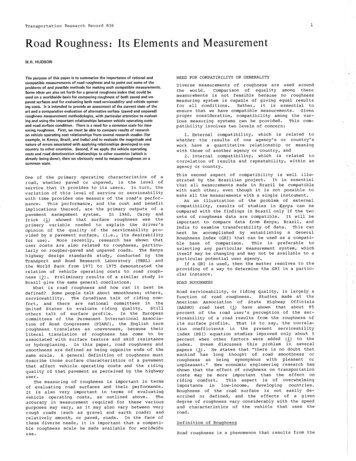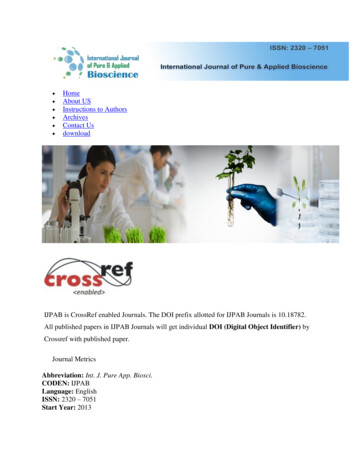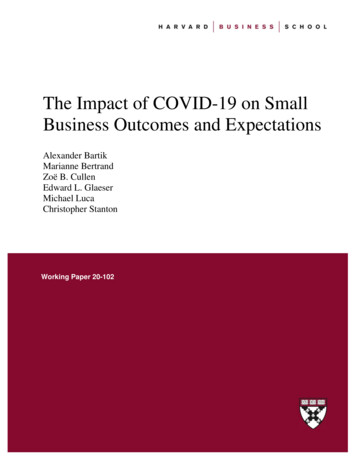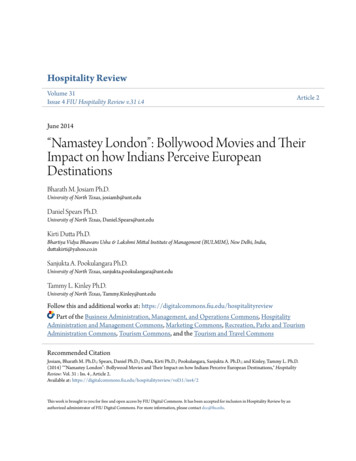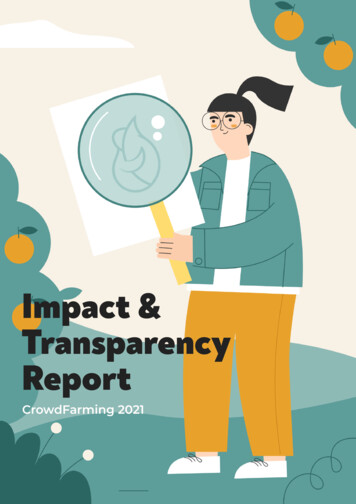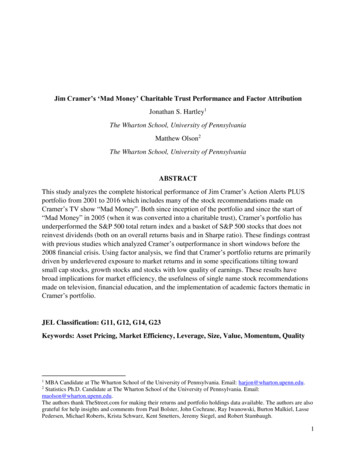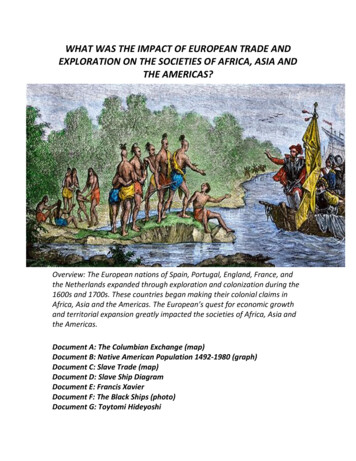
Transcription
WHAT WAS THE IMPACT OF EUROPEAN TRADE ANDEXPLORATION ON THE SOCIETIES OF AFRICA, ASIA ANDTHE AMERICAS?Overview: The European nations of Spain, Portugal, England, France, andthe Netherlands expanded through exploration and colonization during the1600s and 1700s. These countries began making their colonial claims inAfrica, Asia and the Americas. The European’s quest for economic growthand territorial expansion greatly impacted the societies of Africa, Asia andthe Americas.Document A: The Columbian Exchange (map)Document B: Native American Population 1492-1980 (graph)Document C: Slave Trade (map)Document D: Slave Ship DiagramDocument E: Francis XavierDocument F: The Black Ships (photo)Document G: Toytomi Hideyoshi
Background InformationThe Effects of European Colonization on the AmericasThe motivation for European expansionwas economically driven. Europeansbuilt several types of colonies in thenew world. There were different typesof colonial structures built; tradingposts, settlement colonies andplantations. Among the nations buildingcolonies in the New World were Spain,Portugal, England, France and theNetherlands. The European countries’relationships with the Native Americansalready living in the Americas were verydifferent. The French establishedtrading posts with the Native Americansin North America. They set up a furtrade with them and had a goodrelationship.However, in other parts of theAmericas, Europeans treated theNatives much differently. The British,Spanish and Portuguese had a negativeimpact on the Native Americans. Theyquickly developed plantation systemswhich depended on native labor, whichwould later be replaced by importedslave labor from Africa. Theenslavement Native Americans ofteninvolved harsh punishment and horribleworking conditions on the plantations.The plantations emerged in theCaribbean where sugar cane could begrown and sold as a valuable cash crop.The plantation system took place inSouthern English Colonies where cropssuch as tobacco, rice and indigo weregrown. The English settlers pushed theNative Americans off their land in orderto establish their settlements in theNew World, with the no regard for theNatives. Perhaps one of the greatestimpacts on the Natives American peoplewas the diseases brought by Europeansto the New World. The Natives hadnever been exposed to all the diseaseswhich were often found in Europe.American Indians contracted vicious OldWorld pathogens like smallpox andlacked the immunity to fight thesediseases. The Native Americans beganto die at a rapid rate. Many historiansnow believe that new diseasesintroduced after Columbus's arrivalkilled off as much as 90% or more of theNative American population.
BACKGROUND ESSAY QUESTIONS:1. Which European countries created colonies in the New World?2. Where did the Europeans focus on building colonies?3. What was the relationship like between the French and the NativeAmericans?4. How did the Spanish and Portuguese treat the Indians?5. What were the Indians forced to do?6. What were the cash crops grown in the colonies?7. How did the British treat the Native Americans?
Document ASource: www.thehalfpinthistorian.blogspot.comDocument Analysis:1. What did the Europeans bring to the New World that negativelyimpacted the Native Americans?2. Based on your understanding of the Columbian Exchange, howdid contact between the Old World and New World impact ourlives today?
Document gures/2 UN1.gifNative American Population in the Americas 1492 - 1980Document Analysis:1. How did the Native American population in the Americasdecrease from 1492 to 1800? (in millions)2. What event occurred in 1492 that eventually led to a drasticdecrease in the Native American Population living in theAmericas?3. Making an inference, what were the main causes of death of theNative Americans?
Background InformationTHE ATLANTIC SLAVE TRADEIn Africa, economic and politicalinfluence was based on the slave tradewhich began as a result of the need formore labor (people to work) on theplantations in the Americas. To acquirethe slaves, the Europeans traded withthe African tribes. Europeans wouldbring the African tribe leaders weapons,irons, cloth and horses in exchange forslaves. As the demand for slavesincreased, tribal warfare (fighting) inAfrica increased as tribes begancapturing and trading members of othertribes in order to participate in thistrade. Some tribes became verypowerful through this process whilemost African societies suffered from theloss of workers being taken and tradedto the Europeans. Families andcommunities were separated, and themajor population decrease and loss ofworkers led to economic problems inAfrica.The Atlantic slave trade tookplace across the Atlantic Ocean from the16th through to the 19th centuries. Themajority of slaves transported to theNew World were Africans from thecentral and western parts of thecontinent, sold by Africans to Europeanslave traders who then transportedthem to North and South America. Thenumbers were so great that Africanswho came by way of the slave tradebecame the most numerous Old-Worldimmigrants in both North and SouthAmerica before the late eighteenthcentury. This was crucial to thoseEuropean countries which, in the lateseventeenth and eighteenth centuries,were competing with each other tocreate overseas empires.
BACKGROUND ESSAY QUESTIONS:1. What was Africa’s main export?2. What region of Africa did most slaves come from?3. What impact did the Atlantic Slave Trade have on the population ofAfrica?4. Why were slaves needed to work on Plantations?
Document C:Source: e trade 1650-1860.jpgDocument Analysis:1.From this map, what can you infer about the population ofAfrica after the slave trade?2.What part of the Americas had the greatest increase inAfrican slaves?3.What were the Africans doing once they reached theAmericans?
Document er/images/stories/middle passage.jpgDocument Analysis:1. What was the voyage like for the slaves coming to the New World?2. What impact did the harsh conditions of the Middle passage have on theAfricans coming to the new world? Based on the diagram, what can youinfer about the survival rate for the Middle Passage?
Background InformationThe Spread of Christianity andAsian IsolationismIn Asia, interaction wasprompted primarily through trade andthe beginnings of European colonizationand expansion. As a region, Asia wasdistinctly different than the New Worldand Africa in that it possessed highlyadvanced, prosperous, relativelymodern, and military strongcivilizations. Because of thesecharacteristics, European dealing withAsia were based more on an associationof being “equals.” This equalityprompted Europe and Asia to largelyengage in an beneficial traderelationship.During most of the 1600s and1700s, there was no significantEuropean colonization in Asiacomparable to that which existed in theNew World.However, Europeans still had aprofound impact on the society andculture of Asia. For centuries Asiancivilizations had largely developed inisolation from one another and from theEuropean world. With the opening andeventual expansion of traderelationships this tradition of isolationbegan to break down and theintroduction of European ideas occured,especially the introduction ofChristianity as missionaries begantravelling with the European merchants.Because of this influence of Christianity,the many Asian governments limited orclosed off trade with the Europeans andreturned to isolationism in order toprotect their cultures.
BACKGROUND ESSAY QUESTIONS:1. How did Asian societies compare to those in Africa and theAmericas?2. How did these differences affect the way Europeans dealt withAsians?3. Why did the Asian Government limit contact with Europeanculture?4. How did Christianity spread in Asia?
Document ESource:From: Henry James Coleridge, ed., The Life and Letters of St. Francis Xavier, 2d Ed., 2 Vols., (London:Burns & Oates, 1890), Vol. II, pp. 331-350; reprinted in William H. McNeil and Mitsuko Iriye, eds., ModernAsia and Africa, Readings in World History Vol. 9, (New York: Oxford University Press, 1971), pp. 20-30.“I am beginning to have great hopes that God willsoon provide free entrance to China, not only to our Society,but to religious of all Orders, that a large field may be laidopen to pious and holy men of all sorts, in which there maybe great room for devotion and zeal, in recalling men whoare now lost to the way of truth and salvation. I again andagain beg all who have a zeal for the spreading of theChristian faith to help by their holy sacrifices and prayersthese poor efforts of mine, that I may throw open an amplefield to their pious labors.”Document Analysis:1. Why would the spread of Christianity be seen as a threat by the leaders ofChina and Japan?
Document FEuropeans Traveling to Asia“THE BLACK SHIPS”Source: www.japanesehistory.info1.Using the image above, what can you infer about Asian attitudes towardsWestern countries?
Document GSource: The Edicts of Toyotomi Hideyoshi, Expulsion of the Missionaries 1587Japan: A Documentary History: The Dawn of History to the Late Tokugawa Period, ed. D.J. Lu(Armonk, New York: 1997).“The Padres (priests), by their special knowledge (ofscience and medicine), feel that they can at will enticepeople to become their believers (Christians). In doing sothey commit the illegal act of destroying the teachings ofBuddha prevailing in Japan. These padres cannot bepermitted to remain in Japan. They must prepare to leavethe country within 20 days of this notice.”1. Why do you think Japanese attitudes changed towards theEuropeans by 1587?2. Why do you think missionaries had to leave?
Bucketing – Getting Ready to Write:Directions: Look over all the documents and organize theminto buckets. Write buckets labels under each bucket andplace the letter of the documents in the buckets where theybelong. Remember, your buckets are going to become yourbody paragraphs.
Thesis Development and Road MapDirections: On the chicken foot below write your thesis andyour road map. Your thesis is always an opinion andanswers to the question. The road map is created from yourbucket labels and lists the topic areas that you will examinein order to prove your thesis.
DBQ Essay Outline GuideWorking Title:I.INTRODUCTION PARAGRAPHA: Grabber:B: Background (time, place, story):C: Restatement of the question:D. Thesis and Road Map together:II. PARAGRAPH II – BODY PARAGRAPHBaby Thesis for Bucket #1:Evidence: Supporting detail with reference to specific documents:Argument : Connecting Evidence to the Thesis
III. PARAGRAPH III – BODY PARAGRAPHBaby Thesis for Bucket #2:Evidence: Supporting detail with reference to specific documents:Argument : Connecting Evidence to the ThesisIV. PARAGRAPH IV– BODY PARAGRAPHBaby Thesis for Bucket #3:Evidence: Supporting detail with reference to specific documents:Argument: Connecting Evidence to the ThesisV. PARAGRAPH V – CONCLUSIONConclusion: Statement of mail idea, along with a fresh insight orwrinkle.
already living in the Americas were very different. The French established trading posts with the Native Americans in North America. They set up a fur trade with them and had a good relationship. However, in other parts of the Americas, Europeans treated the Natives much differ

